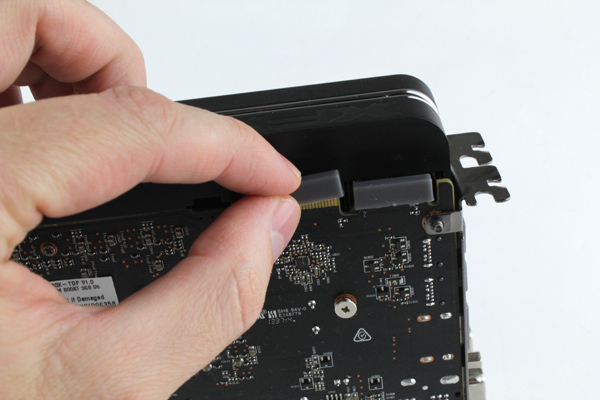Index
In order to deal with a relatively hot GPU, the card comes with a powerful second-generation Double Dissipation cooler – a cooler with a special heatsink and two fans. When we heard that XFX is working on a new cooler we could not wait to give it a go in our bench rig. Why? Because AMD's own cooling solution for the R9 280X did not end up as quiet as we all hoped it would be.
Just to refresh your memory, XFX was among first to hit the market with a non-reference HD 7970 graphics card. The card featured high factory overclock but thanks to Ghost Thermal Technology and XFX's first-generation Double Dissipation cooler, GPU thermals were kept in check and on top of that our ears were threated more gently compared to the reference cooler. The Double Dissipation cooler on the HD 7970 managed to provide good cooling while keeping noise levels at a reasonable level; it was not completely silent but it was close. However standards have now changed and users simply demand quieter coolers. This has a lot to do with Nvidia, which really raised the bar with its latest generation reference coolers and the Titan cooler in particular.
AMD managed to create a new reference cooler for Volcanic Islands which is significantly quieter compared to the previous generation, but as we already noted it is not silent. However it looks like all AMD partners have decided to implement in-house designed coolers for the R9 280X and we will not see reference cards in the shops.
XFX also has its own cooler which design borrows from the reference one only in that it takes a small amount of AMD’s traditional red color to create nice diverging effect for the fans and the cooler is two slots high.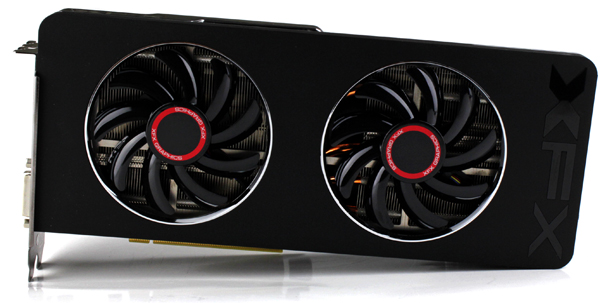
Ghost 2.0 Thermal design is the key factor for better cooling performance and it is a substantial design evolution from the original Ghost thermal design introduced in 2012. XFX opted for this technology because it allows airflow to cool the heatsink as well as other components on the PCB. As you know, overheated components and even an overheated PCB can also reduce performance. The new design includes a bigger dissipation surface, which is achieved by extending the cooler's height one and half centimeters over the standard size.
The Radeon DD R9 280X 1000M draws power via a 6-pin power connector and another 8-pin power connector. You will find a 6-pin to 8-pin power converter in the package.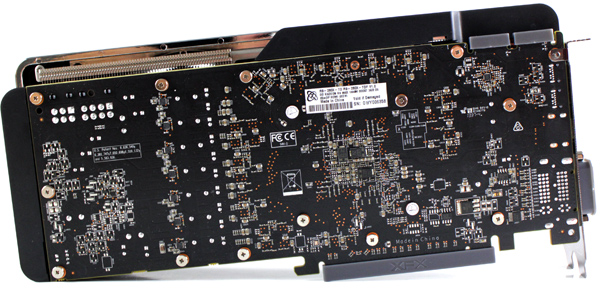
Because the cooler’s size extends over the standard size XFX decided to use lightweight polycarbonate construction which also ensures high durability and heat resistance. A new two-piece design protects PCB components from damage and dust and results in a beautiful, modern industrial design. The shroud house two IP5X Dust Free 85mm low profile fans. XFX opted for two fans that push air downwards, straight at the heatsink. As a result, some of the heat may be released inside the case so you might want to make sure your in-case airflow is adequate.
Both fans share the same 4-pin power connector. Setting the RPM manually is a breeze using AMD’s Overdrive or any other popular utility like MSI Afterburner or PrecisionX.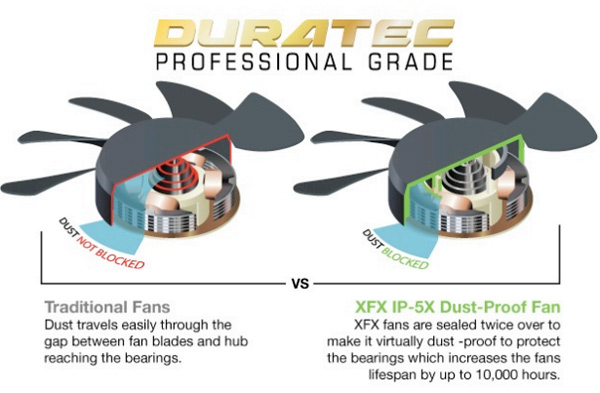
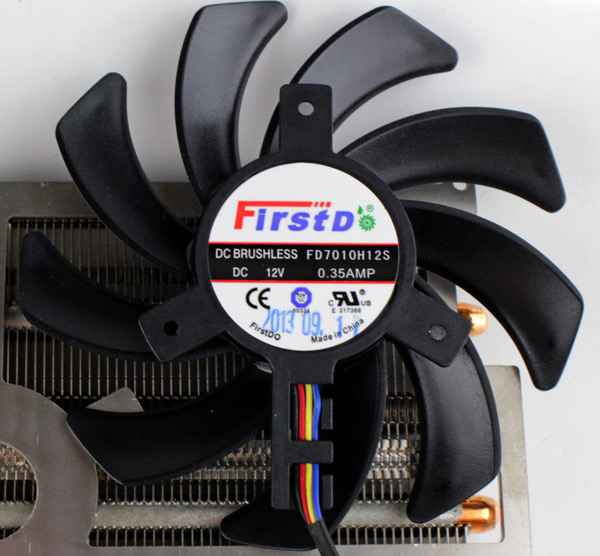
The card has two dual-link DVI outs, one standard HDMI and two mini DisplayPort outs. Next generation 4K (4096x2160) and UHD (3840x2160) resolutions are supported. You can also combine any combination of display connectors. 
The bracket design includes the XFX logo which actually helps increase airflow, however it is not very important for the Double Dissipation cooler because this cooler features an open cooling design.
The card comes with two CrossFire connectors and it is possible to combine it with the old HD 7970. Actually you can use any combination of HD 7970 / HD 7970 GHz Edition / R9 280X cards.
